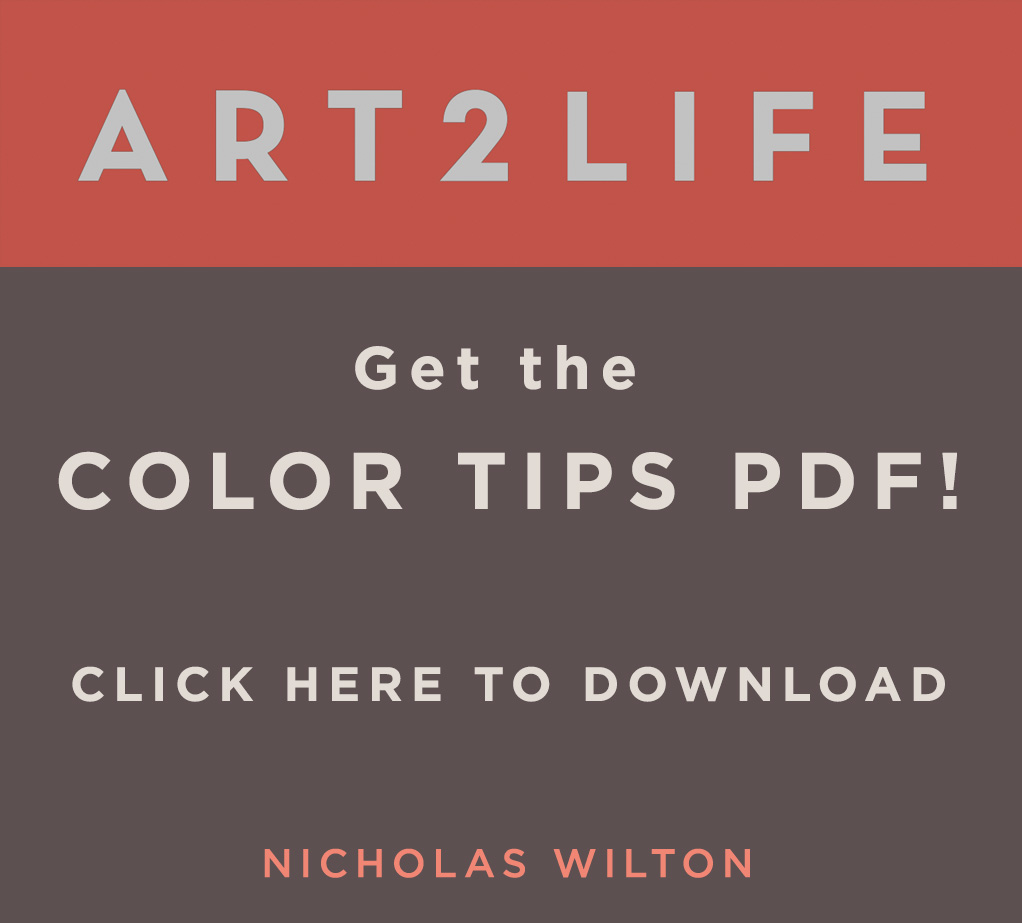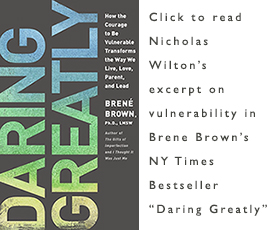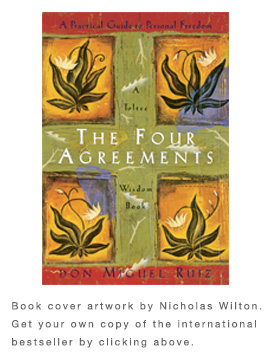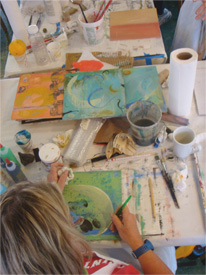2019: A New Beginning
Hi everyone,
I hope your Holidays and your New Year
were enjoyable! I had the chance to relax, to
to connect with family and friends, and to reflect
on all that happened in 2018..
Now I am back in the studio, looking at the
freshly painted walls, and I have to ask myself:
what is next? Where do I want to go with my art?
What new direction do I want to push myself towards?
Watch the video and see what I mean…
Starting anew – creatively speaking – can always
be a bit of a daunting experience, but it doesn’t have
to be! Instead, I like to think of it as having a
“beginner’s advantage”, of not being beholden
to anything other than your wildest dreams and hopes!
The New Year brings an opportunity for igniting those
ideas that have always been in the back of our head, and we
owe it to ourselves to at least give it a shot. As the great
Winston Churchill once said, “Success is not final, failure is
not fatal: It is the courage to continue that counts.”
It is with this in mind that I go into 2019, hand in hand, with
all of you, May we greet the coming days together and
with vigor! I look forward to seeing what all of us create.
Let me know what you think and leave a comment below.
What are your dreams for 2019?
In gratitude, Nicholas
PS In the spirit of growing together, I have created an Art2Life
Facebook Group. It’s free to join – to become a part of it,
just click here and one of my team members will bring you in.
The Exhibition and a Thank You
Hi everyone,
This past Friday I had the pleasure of attending
the opening of my show, “Orchestrated Moments”,
at the beautiful Julie Nester Gallery in Park City, Utah.
You can learn more about the exhibition by
clicking here.
It is incredibly gratifying to see all of the finished
paintings hung up together. Seeing all of the work,
displayed as a cohesive body, watching people
enjoying and absorbing the work – this is one
of the reasons why I became an artist.
Watch the video and see what I mean
This being the last vlog for 2018 I wanted to say thank you.
Firstly for all your interest in my work, the encouragement as
well as your feedback. It has increased my learning and
in the end improved the art I made this past year.
Especially for this current exhibition.
Secondly, a gigantic thank you for taking the time to
contribute on this page. The questions, sharing your art process,
know-how and experiences in the comments does really help so,
so many artists. In the end it is about all of us trying to pull off
making our art and helping one another makes it so, so much easier.
I hope 2019 is going to be a great year for all of our art! Let’s do this!
In gratitude, Nicholas
Hi everyone,
I just returned from my workshop in Mexico
and I started looking at all the little 12″ x 12″
pieces I was demonstrating on while there.
As I was looking at these panels, I was struck by
just how fun and open they are. None of them are
particularly good or impressive, but there is
a freedom in these panels that deserves
to be recognized and replicated.
Watch the video and see what I mean
Try spending some time at the beginning stages of your art simply experimenting.
That is the time when the stakes are low but the possible benefit from learning something new is high.
Let me know in the comments if this is something that might be helpful or similar to something you do in your art practice.
In gratitude, Nicholas
PS I’ve created a private group in Facebook called
Art2life Artists. It’s free to join, and we’ve already built
a vibrant community of fellow creatives. If you haven’t
already joined and would like to, just click here.
Breaking the Mold
Hi everyone,
I’m currently teaching a workshop in Mexico.
There are people from all over the world here,
a wonderful mix of creative people, all sharing our
approaches to art making and learning from one
another. This is always one of my favorite things
when it comes to teaching.
A recurring theme at this workshop is getting
out of your comfort zone. Pushing ourselves to
make marks and use colors that we normally don’t
is crucial to growing as an artist, but getting there
can be a little tricky at first.
Watch the video and see what I mean
Without inviting the new and unknown into our
work, we do not provide an opportunity for spontaneity.
This component is necessary for creating strong,
authentic art and though the road getting there can
often be bumpy, it is totally worth the journey.
Leave a comment here and let me know what you think!
When you work, do you find yourself on the more controlled
side of things or more loose, or perhaps somewhere in
between? I would love to know.
In gratitude, Nicholas
Perspective After the Marathon
Making Your Mark
Hi everyone,
It’s incredibly gratifying to finish
a painting. Seeing everything completed
and in the right place – it’s like coming home at
the end of a long journey.
There’s just one thing left to do: the signature.
Now, not every artist signs their work, which is fine!
It’s really a matter of preference. When it comes to my
paintings, for example, I do like to sign them.
Watch the video and see how I do it
There are of course a million ways to do this – no one
method is the best – but what do you think about this?
Do you like to sign your work, and if so, how?
I would love to know!
In gratitude, Nicholas
The Visual Hierarchy
Hi Everyone,
When I start a painting, I rarely do
so with any particular goal in mind. It is more
about simply putting marks down on the panel,
seeing what develops and going from there.
In a very real sense you could say the
painting tells me where to go next.
At a certain point however, the painting begins
to gain more focus, and I start to see what it is
really about. Once this happens, I organize my
marks such that they serve to heighten the
main narrative of the piece.
Watch the video and see what I mean
Do you want your viewers to be drawn towards the
design, the color, or something else? Clarifying and
removing those elements that distract from the main
focus of your work is key to creating strong art.
Let me know what you think about this. When you
create, what are you trying to draw your viewer’s
attention to? I would love to know.
In gratitude, Nicholas
PS I’ve created a private group in Facebook called
Art2life Artists. It’s free to join, and we’ve already built
a vibrant community of fellow creatives. If you haven’t
already joined and would like to, just click here.
The Space Between
Hi Everyone,
The best paintings are like your
favorite songs; there is a rhythm, a sense
of pushing your ear from one beat to the next,
all the while providing enough space for the
listener to savor each sonic peak and valley.
It is this interplay between spaces and
shapes – between opposites – that I
try to imbue my work with, though the path
is not always obvious. Figuring out
the next step often just takes a willingness
to throw some paint down and see what happens.
Watch the video and see what I mean
Creating that sense of movement, of adding
a vibrancy to one’s work, is a process of call and
response, of creating an internal language to your
painting and then building upon it.
Let me know what you think about this. What do you
do when you have a painting that isn’t coming together
in the way you want it to? I would love to know.
In gratitude, Nicholas
PS I’ve created a private group in Facebook called
Art2life Artists. It’s free to join, and we’ve already built
a vibrant community of fellow creatives. I would
love to see you there! To join, just click here.
The Conversation of Your Composition
Hi Everyone,
When working on a piece, I am
always trying to make sure as much
of the surface as possible is activated,
that there is enough movement to guide
the viewer’s eye throughout the entire painting.
One effective way to do this is to use color.
I’m currently working on a painting that has
a little bit of the color red in it, and I decided
to bring that color to other parts of the painting.
I hope this will make for a more
sophisticated viewing experience.
Watch the video and see what I mean
This painting still has a bit to go, but
I feel that I’ve finally passed a milestone here.
I’m excited to see what comes next.
What do you think about this? How do you
use color in your practice? Let me know!
I would love to hear how your practice
differs from mine!
In gratitude, Nicholas
PS I’ve started a little group on Facebook called
Art2life Artists. It’s free to join, and I would love to see
you in there! To join, just click here.
Remove to Reveal
Hi Everyone,
A key part of my practice is building
up layers, and then removing them partially
to reveal what is underneath.
Case in point: I recently decided to make a
piece that was predominantly red. But rather than
just cover the surface entirely in red paint, I decided
to do something a little different, and ultimately, more exciting.
To watch the video and see what I mean
Seeing the history of the piece, of what
came before, is essential to my work.
Let me know what you think about this.
Do you do anything similar in your practice? Do
you like to build surfaces up and then
remove, or do you do something else?
I would love to hear how your practice
differs from mine!
In gratitude, Nicholas



